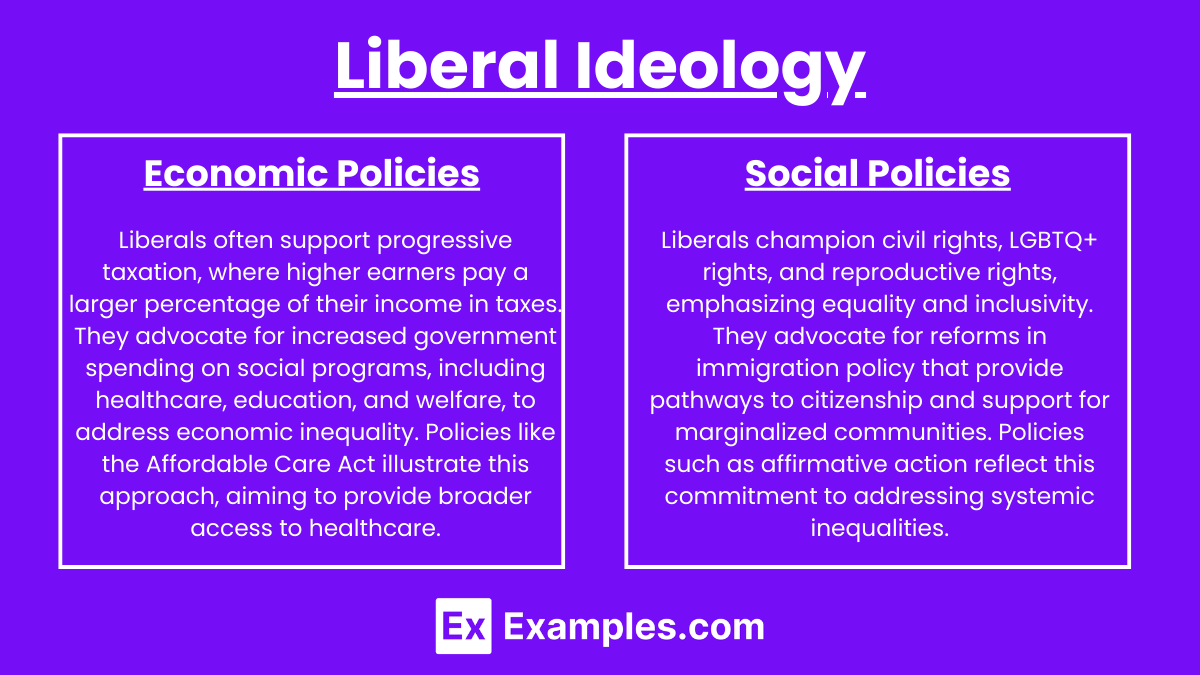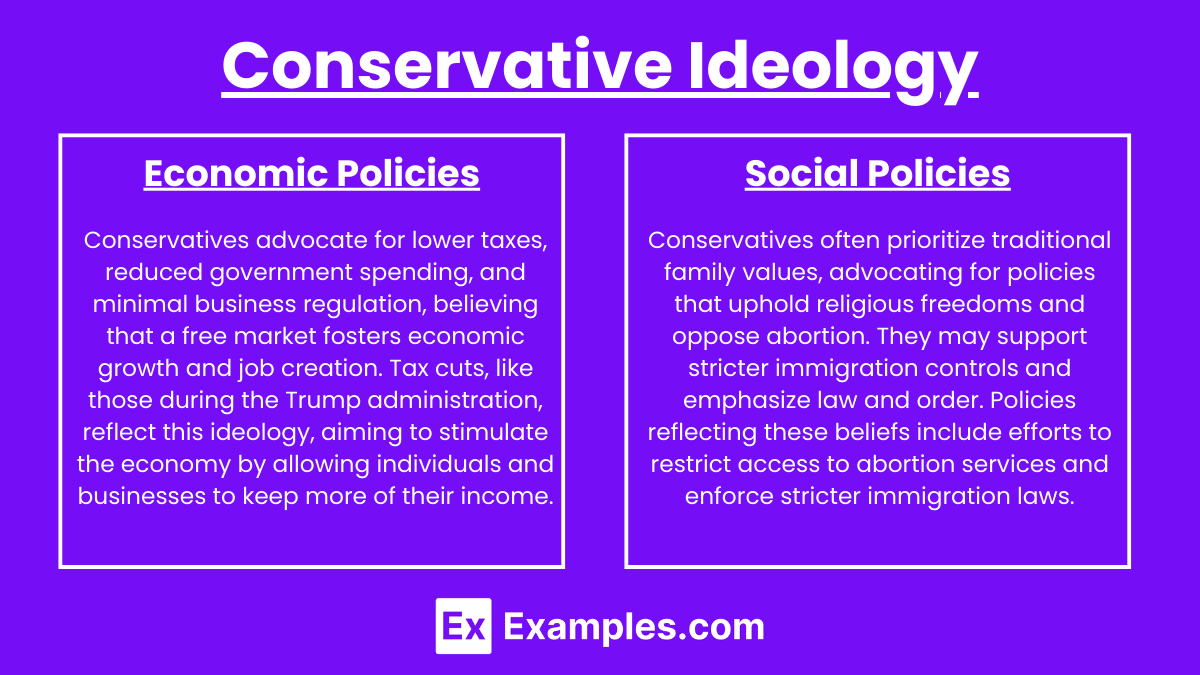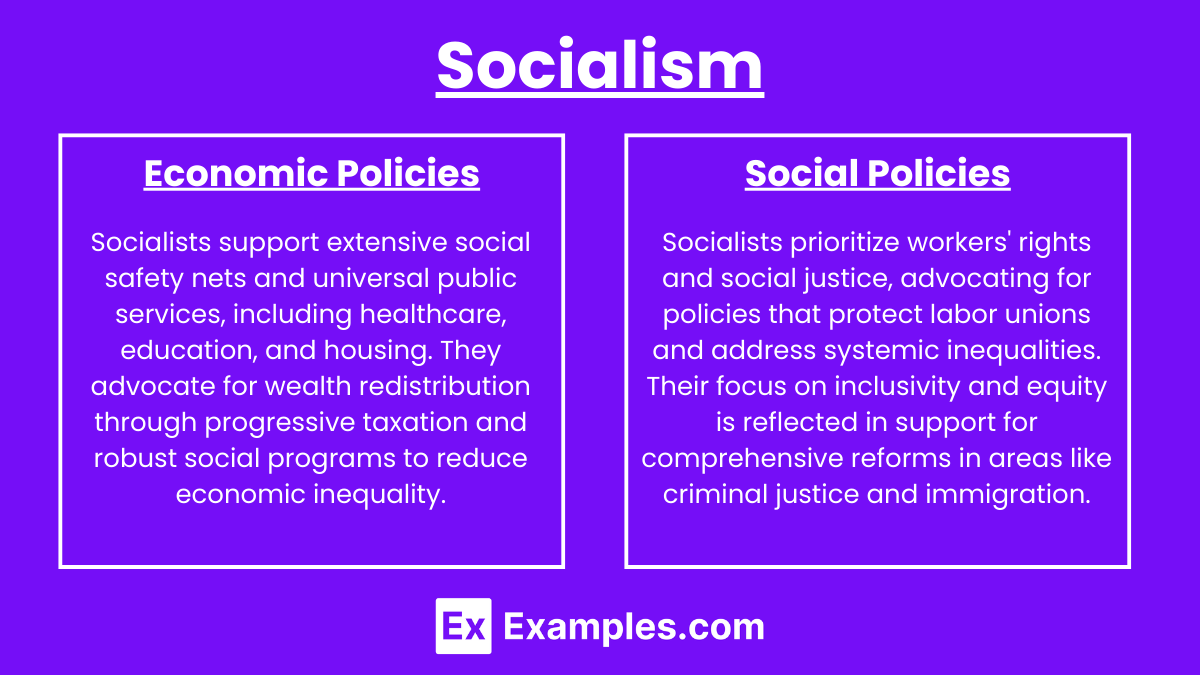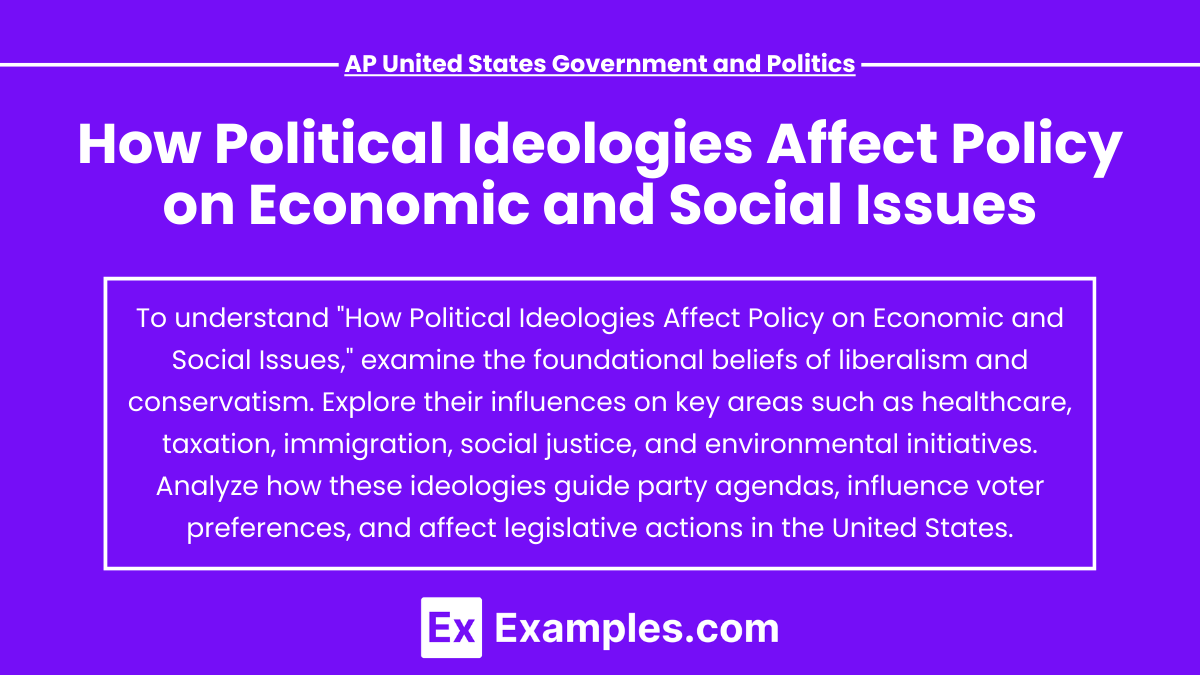Political ideologies significantly influence policies on economic and social issues in the United States. These ideologies, primarily liberalism and conservatism, shape how parties and lawmakers approach key topics such as healthcare, taxation, immigration, and environmental regulations. Understanding the fundamental beliefs that drive these policies is essential for analyzing legislative decisions and electoral outcomes. By examining the implications of these ideologies, one gains insight into the broader dynamics of American governance and the ongoing debates that shape public policy.
Free AP United States Government and Politics Practice Test
Learning Objectives
In studying "How Political Ideologies Affect Policy on Economic and Social Issues" for the AP United States Government and Politics exam, students should learn to identify and differentiate the core beliefs of liberal, conservative, and other political ideologies. They will analyze how these beliefs influence specific policies related to healthcare, taxation, social issues, immigration, and environmental concerns. Additionally, students should explore the implications of these ideologies on voter behavior and legislative outcomes, providing a comprehensive understanding of the role of political beliefs in shaping American governance.
Political ideologies play a crucial role in shaping the policies that govern economic and social issues in the United States. Understanding how these ideologies influence decision-making helps clarify the rationale behind various legislative proposals and governmental actions.
1. Liberal Ideology

Liberalism generally advocates for active government involvement in the economy and the promotion of social justice.
Economic Policies: Liberals often support progressive taxation, where higher earners pay a larger percentage of their income in taxes. They advocate for increased government spending on social programs, including healthcare, education, and welfare, to address economic inequality. Policies like the Affordable Care Act illustrate this approach, aiming to provide broader access to healthcare.
Social Policies: Liberals champion civil rights, LGBTQ+ rights, and reproductive rights, emphasizing equality and inclusivity. They advocate for reforms in immigration policy that provide pathways to citizenship and support for marginalized communities. Policies such as affirmative action reflect this commitment to addressing systemic inequalities.
2. Conservative Ideology

Conservatism typically emphasizes limited government intervention, individual responsibility, and traditional social values.
Economic Policies: Conservatives advocate for lower taxes, reduced government spending, and minimal regulation of businesses. They believe that a free market leads to economic growth and job creation. The push for tax cuts, such as those implemented during the Trump administration, reflects this ideology, aiming to stimulate the economy by allowing individuals and businesses to retain more of their income.
Social Policies: Conservatives often prioritize traditional family values, advocating for policies that uphold religious freedoms and oppose abortion. They may support stricter immigration controls and emphasize law and order. Policies reflecting these beliefs include efforts to restrict access to abortion services and enforce stricter immigration laws.
3. Socialism

Socialist ideologies advocate for collective ownership and government control over key industries to promote social welfare.
Economic Policies: Socialists support extensive social safety nets and universal public services, including healthcare, education, and housing. They advocate for wealth redistribution through progressive taxation and robust social programs to reduce economic inequality.
Social Policies: Socialists prioritize workers' rights and social justice, advocating for policies that protect labor unions and address systemic inequalities. Their focus on inclusivity and equity is reflected in support for comprehensive reforms in areas like criminal justice and immigration.
Examples
Example 1 : Healthcare Policy
Liberal ideologies advocate for government involvement in healthcare, leading to policies like the Affordable Care Act (ACA), which aims to expand coverage and reduce costs. This reflects a belief in healthcare as a right. Conversely, conservative ideologies often oppose government-run healthcare, advocating for market-based solutions, lower regulations, and health savings accounts, emphasizing individual choice and personal responsibility.
Example 2 : Taxation and Economic Policy
Democrats typically support progressive taxation, where higher-income individuals pay a larger percentage in taxes to fund social programs. This approach aims to reduce income inequality and provide essential services. Republicans, on the other hand, advocate for tax cuts and reduced government spending, arguing that lower taxes stimulate economic growth and job creation. This reflects a belief in free-market principles and minimal government interference in the economy.
Example 3 : Social Issues and Civil Rights
Liberal ideologies prioritize civil rights and social justice, supporting policies that promote equality for marginalized groups, such as LGBTQ+ rights and anti-discrimination laws. This commitment is evident in the push for marriage equality and protections against workplace discrimination. In contrast, conservatives often emphasize traditional values, advocating for policies that reflect these beliefs, such as restrictions on abortion and efforts to define marriage as between one man and one woman.
Example 4 : Immigration Policy
Liberals generally advocate for comprehensive immigration reform, including pathways to citizenship for undocumented immigrants. This approach reflects a belief in inclusivity and the value of diversity. Conservatives, however, often prioritize stricter immigration enforcement and policies aimed at securing borders, reflecting a belief in law and order. This divergence shapes debates over immigration reform and related legislation.
Example 5 : Environmental Policy
The Democratic Party typically supports strong environmental regulations and policies aimed at combating climate change, such as rejoining the Paris Agreement and investing in renewable energy sources. This reflects a belief in the government's role in addressing environmental issues for the public good. Republicans often prioritize economic growth over environmental regulations, arguing that excessive regulation can hinder business and economic development. This ideological divide shapes the national conversation on climate policy and environmental protections.
Multiple Choice Questions
Question 1
Which of the following policies is most closely associated with liberal ideologies regarding healthcare?
A) Tax cuts for private health insurance companies
B) Expansion of Medicare and Medicaid
C) Increased deregulation of healthcare providers
D) Promotion of health savings accounts
Correct Answer: B) Expansion of Medicare and Medicaid
Explanation: Liberal ideologies typically support government involvement in healthcare, advocating for programs like Medicare and Medicaid to expand coverage and reduce costs. They view healthcare as a right, whereas conservative approaches generally focus on tax cuts and deregulation, emphasizing market-driven solutions.
Question 2
What economic policy is commonly advocated by conservative ideologies?
A) Progressive taxation to fund social services
B) Increased government spending on infrastructure
C) Lower taxes and minimal regulation for businesses
D) Universal basic income
Correct Answer: C) Lower taxes and minimal regulation for businesses
Explanation: Conservative ideologies prioritize free-market principles, advocating for lower taxes and reduced regulation as a means to stimulate economic growth. They argue that allowing individuals and businesses to retain more income fosters investment and job creation, contrasting with liberal calls for progressive taxation and increased government spending.
Question 3
In the context of immigration policy, which stance is typically taken by liberal ideologies?
A) Stricter enforcement of immigration laws
B) Pathways to citizenship for undocumented immigrants
C) Deportation of all undocumented immigrants
D) Limiting refugee admissions
Correct Answer: B) Pathways to citizenship for undocumented immigrants
Explanation: Liberal ideologies generally advocate for comprehensive immigration reform, including pathways to citizenship for undocumented immigrants, emphasizing inclusivity and diversity. In contrast, conservative ideologies often focus on stricter enforcement and border security, prioritizing law and order over reform.


